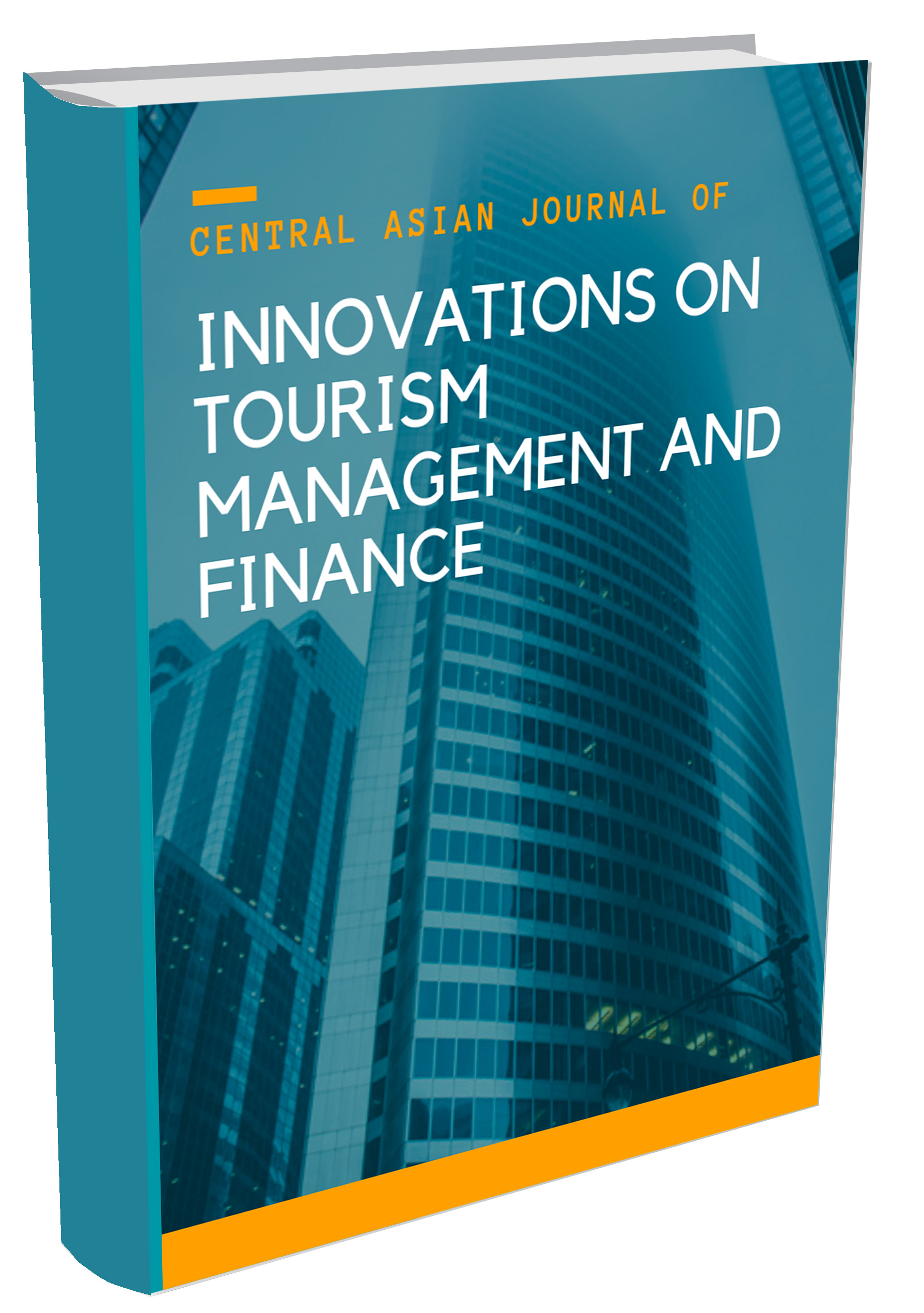The Impact of Health Risk on Household Risky Financial Asset Allocation is Analyzed Based on CGSS2017 Data
Abstract
The body mass index (BMI) is an effective measure of human health recommended by the World Health Organization. When it measures whether the body has health risks, the evaluation results are more objective and relevant than the subjective evaluation results of family members' illness, self-measured health level, mental health status, subjective happiness and so on. Therefore, we use the Chinese General Social Survey 2017 years data, using probit model , by controlling the demographic characteristics of the family, wealth, Internet use, out-of-pocket medical expenses, such as variables, and analyses the influence of BMI family involved in the influence of risk investment and holding the proportion of financial assets. The results showed that the BMI had a significant positive correlation with the proportion of households participating in and holding risky financial assets. Moreover, variables such as age, total household income, education level, home ownership and Internet use all showed significant correlations.
References
2. Smith, James. (1999). Healthy Bodies and Thick Wallets: The Dual Relation Between Health and Economic Status. Journal of Economic Perspectives. 13. 145-166.
3. Wu, Stephen. (2001). The Effects of Health Events on the Economic Status of Married Couples. Journal of Human Resources. 38.
4. Rosen S. And Stephen Wu(2004).Portfolio Choice and Health Status.Journal of Financial Economics, 72, 457 -- 484.
5. Berkowitz, M. , K.J. Quiu (2006).A Further Look at Household Portfolio Choice and Health Status.Journal of Banking andFinance,30,pp. 1201 -- 1217.
6. Campbell,John.(2006).Household Finance. Journal of Finance.61.1553-1604.
7. Edwards R D.(2008). Health Risk and Portfolio Choice. Journal of Business & Economic Statistics, 26(4) : 472-485.
8. Cardak, Buly & Wilkins, Roger. (2008). The Determinants of Household Risky Asset Holdings: Australian Evidence on Background Risk and Other Factors. Journal of Banking & Finance. 33. 850-860.
9. Ryan D.Edwards(2010).Optimal portfolio choice when utility depends on health. International Journal of Economic Theory.6(2): 205-225.
10. Fisher, Patti & Anong, Sophia. (2013). Health status and household saving behavior. 5. 167-177.
11. Lei Xiaoyan, Zhou Yuegang (2010). Chinese households' portfolio choice: health status and risk appetite [J].Financial Research,(01):31-45.
12. Chen Qi, Liu Wei (2014). The Impact of Health Expenditure on Residents' Asset Choice Behavior -- Based on the Homogeneity and Heterogeneity Debate.Shanghai Economic Research Journal (06),111-118.
13. Hu Zhen, He Jing, Zang Rihong (2015). The impact of health on the financial asset allocation of urban households: Evidence from China. Journal of NortheaUniversity (Social Science Edition)(02),148-154.
14. Yogo, M.(2016). Portfolio choice in retirement: Health risk and the demand for annuities, housing, and risky assets[J]. Journal of Monetary Economics, 80:17-34.
15. Angrisani M, Atella V, Brunetti M.(2018).Public health insurance and household portfolio Choices: Unravelling financial Side Effects of Medicare.[J]. Journal of Banking & Finance, 93(AUG.):198-212.
16. Fan E, Zhao R.(2009).Health status and portfolio choice: Causality or heterogeneity?.Journal of Banking and Finance, 33(6):1079-1088.
17. He, X.Q., Shi, W., Zhou, K.G. (2009). Background Risk and Residential Risk in Financial Asset Investment,44(12):119-130.
18. Wu Weixing, Rong Apple, Xu Qian (2011). Health and Family Asset Choice.Economic Research Journal,46(S1):43-54.
19. Bogan V L, Fertig A R.(2013) .Portfolio Choice and Mental Health[J]. Review of Finance, , 17(3):955-992.
20. Silvia Bressan,Noemi Pace,Loriana Pelizzon. (2014)Health status and portfolio choice: Is their relationship economically relevant? . International Review of Financial Analysis.32,109-122,
21. Wu Qingyue, Zhou Qin (2015) Health insurance, risk appetite and household risk financial asset investment.Investment Research,34(05):18-32.
22. Haslem, John. (1979). A Test of a Revised Theory of the Investment Life Cycle. Baylor Business Studies. 10. 17-33.
23. Farinha, Jose & Raposo, Hugo & Galar, Diego. (2020). Life Cycle Cost versus Life Cycle Investment -- A new Approach. Wseas Transactions on Systems and Control.
24. Skinner, Jonathan. (1988). Risky Income, Life Cycle Consumption, and Precautionary Savings. Journal of Monetary Economics. 22. 237-255.
25. Hayakawa, Hiroaki. (2001). The Permanent Income-Life Cycle Hypothesis in a Monetary Economy and the Neutrality of Money: A Continuous-Time Analysis. The Japanese Economic Review. 52. 77-92.
26. Ø verland, Simon & Kinge, J & Knudsen, Ann. (2019). Household Income, Life Expectancy and Cause Specific Mortality in Norway, 2005-2015. The European Journal of Public Health.
Copyright (c) 2021 Yuan Kefeng, Zhang Xiaoxia

This work is licensed under a Creative Commons Attribution 4.0 International License.
In submitting the manuscript to the Central Asian Journal of Innovations on Tourism Management and Finance, the authors certify that:
- They are authorized by their co-authors to enter into these arrangements.
- The work described has not been formally published before, except in the form of an abstract or as part of a published lecture, review, thesis, or overlay journal.
- That it is not under consideration for publication elsewhere,
- The publication has been approved by the author(s) and by responsible authorities – tacitly or explicitly – of the institutes where the work has been carried out.
- They secure the right to reproduce any material that has already been published or copyrighted elsewhere.
- They agree to the following license and copyright agreement.
License and Copyright Agreement
Authors who publish with Central Asian Journal of Innovations on Tourism Management and Finance agree to the following terms:
- Authors retain copyright and grant the Central Asian Journal of Innovations on Tourism Management and Finance right of first publication with the work simultaneously licensed under Creative Commons Attribution License (CC BY 4.0) that allows others to share the work with an acknowledgment of the work's authorship and initial publication in this journal.
- Authors can enter into separate, additional contractual arrangements for the non-exclusive distribution of the Central Asian Journal of Innovations on Tourism Management and Finance published version of the work (e.g., post it to an institutional repository or edit it in a book), with an acknowledgment of its initial publication in this journal.
- Authors are permitted and encouraged to post their work online (e.g., in institutional repositories or on their website) before and during the submission process, as it can lead to productive exchanges, as well as earlier and greater citation of published work.





